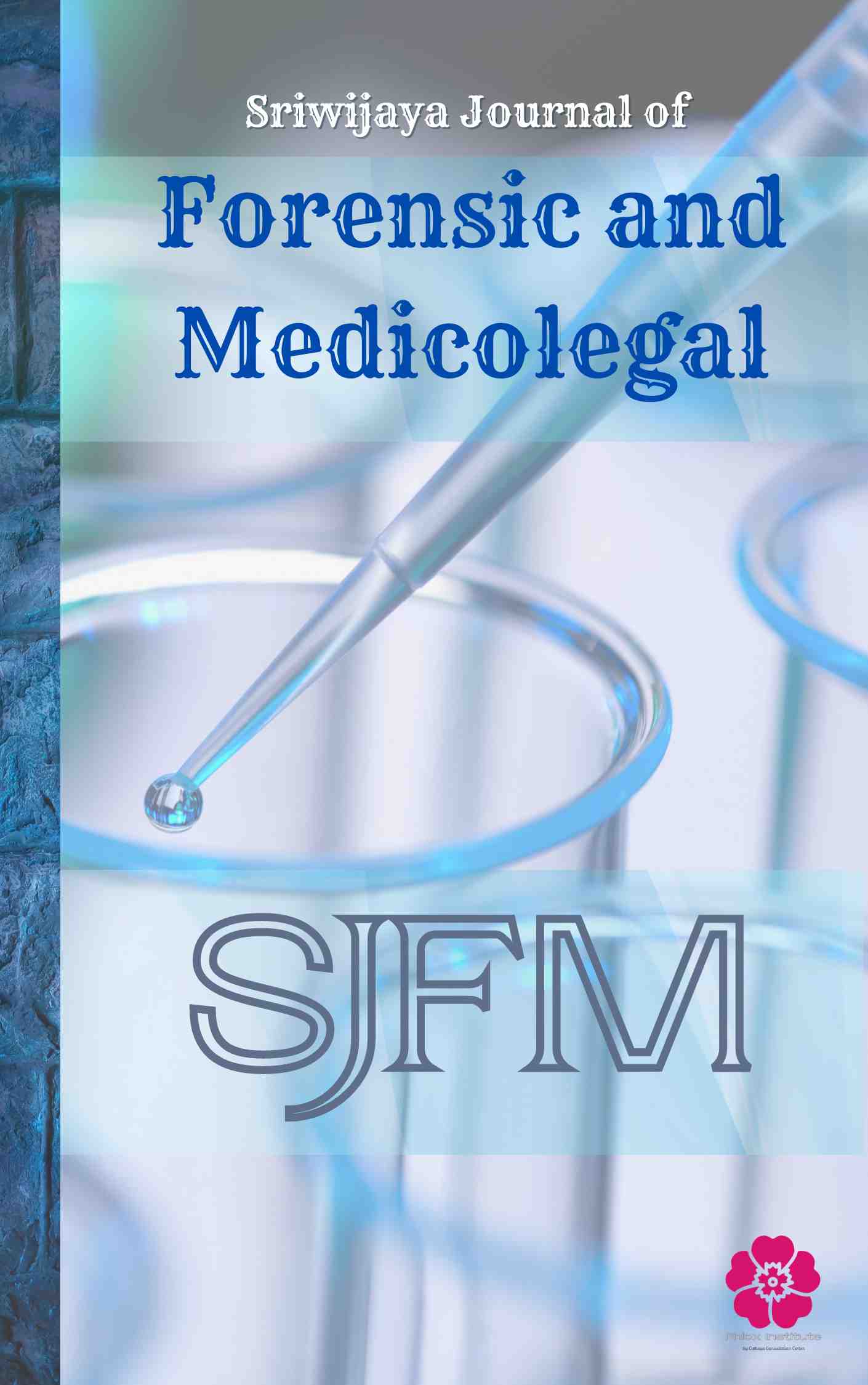Main Article Content
Abstract
Introduction: Forensic DNA phenotyping (FDP) is an emerging field that utilizes genetic information to predict an individual's externally visible characteristics (EVCs). While its application has shown promise in aiding criminal investigations globally, its utility within the diverse Indonesian population remains largely unexplored. This study aimed to investigate the potential of FDP for predicting EVCs in a representative sample of the Indonesian population, evaluating its accuracy and implications as a novel tool for criminal investigations in this unique context.
Methods: This study involved the analysis of anonymized DNA samples from 1000 individuals self-identified as belonging to various ethnic groups across Indonesia. A panel of single nucleotide polymorphisms (SNPs) known to be associated with EVCs including hair color, eye color, skin pigmentation, and biogeographic ancestry (BGA) was selected based on existing literature. Genotyping data was generated to reflect the genetic diversity observed in Indonesian populations. Statistical analyses were performed to assess the predictive power of the SNP panel for each EVC and to evaluate the correlation between predicted phenotypes and self-reported characteristics.
Results: The results demonstrated a moderate to high predictive accuracy for several EVCs within the Indonesian population. Skin pigmentation showed the highest predictability, followed by eye color and hair color. BGA prediction effectively clustered individuals based on their genetic profiles, aligning with the known population structure of Indonesia. Significant variations in allele frequencies for EVC-associated SNPs were observed across different ethnic groups, highlighting the importance of population-specific data.
Conclusion: This study provides preliminary evidence suggesting that forensic DNA phenotyping holds significant potential as a novel tool for criminal investigations in Indonesia. The ability to predict EVCs from DNA could provide valuable leads in cases where traditional DNA profiling yields no matches. However, further research with real Indonesian population data is crucial to validate these findings and to develop robust, population-specific FDP models. Ethical and legal considerations surrounding the use of this technology in the Indonesian context must also be carefully addressed.
Keywords
Article Details
Sriwijaya Journal of Forensic and Medicolegal (SJFM) allow the author(s) to hold the copyright without restrictions and allow the author(s) to retain publishing rights without restrictions, also the owner of the commercial rights to the article is the author.

